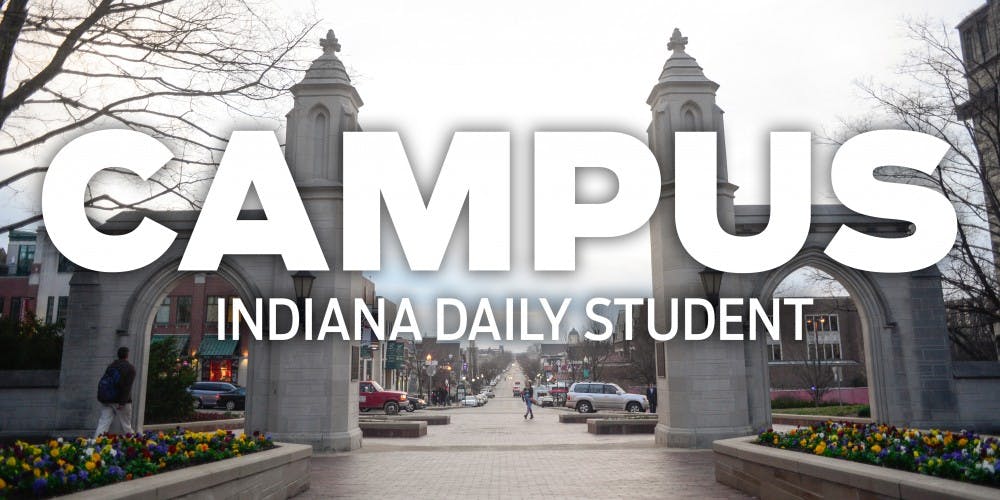Justice Eiden and a group of IU Student Association student affairs and safety committee members walked through campus Thursday night to identify poorly lit areas.
Eiden said when the group reached Dunn Meadow, the rows of streetlights stopped, and everything was dark.
“It is a definite problem,” Eiden said.
Eiden, a senior and IUSA chief of student affairs and safety, said the group decided to find poorly lit areas to push for more lighting so that students could feel safer. In areas where lighting is sparse, Eiden said many students are scared to walk home.
In the two hours spent walking the streets, Eiden said the group found several areas with inadequate lighting and about 100 lights that had gone out, especially on the south side of campus.
Drew Ficociello, a sophomore and member of the student affairs committee, said she counted 28 lights burnt-out bulbs while walking near Dunn Meadow and Seventh Street.
Other problematic areas included behind most dorm buildings, throughout the arboretum and by the IU stadium where two attempted abductions took place during Little 500 festivities last April, Eiden said.
He said many buildings on the north side of campus, including administrative offices and Collins Living-Learning Center, had lighting problems.
“There wasn’t even a single lamp by the doors of those buildings,” Eiden said.
Eiden said he has heard many complaints from students about poorly lit areas on campus, but Dunn Meadow has received the most complaints. The area has also become a hotbed for robberies and attempted assaults, Eiden said.
“It’s a clear danger to students,” Eiden said.
IU Police Department Chief Laury Flint said well-lit areas tend to have fewer thefts. She said more lights may reduce crime but will definitely make students feel safer.
Improved street lighting is associated with a 21-percent decrease in crime in tested areas, according to an analysis by Brandon Welsh and David Farrington, two criminologists who presented their findings to the Swedish National Council for Crime Prevention in 2007. The analysis was a compilation of 13 separate studies on the subject.
As winter comes and there are fewer daylight hours, Eiden said he wants to make sure more lights are up.
Eiden said he knows many students, especially female students, who use Uber instead of walking half a mile through dimly lit streets.
Ficociello said she often also does not feel safe walking home at night.
While she walked through Dunn Meadow marking areas with poor lighting, she said she noticed that a woman saw her and swerved onto another path, going out of her way to avoid crossing paths with a stranger in a dimly lit area.
“She didn’t even want to be on the same sidewalk as me,” Ficociello said. “And good for her for taking that step to keep herself safe in an area like that.”
In addition to adding more lights, Jordan Kehrt, IUSA co-chief of student affairs and safety, said his committee is also looking into switching some lights to the LED lights used near newer buildings.
He said the LED lights are more energy efficient and brighter.
“The brighter the lights are, the safer the environment will be for students,” he said.
Kehrt said more lighting makes people think twice about stealing something or harming a student. Illuminating buildings also reduces the potential for crimes by making people easily visible.
He said additional lighting would also make it easier for officers who have to patrol many areas of campus with only a flashlight in hand.
“It’s unsafe for police, and it’s unsafe for students,” Kehrt said.
Eiden said more lighting will also help surveillance cameras pick up videos that police officers can use to identify criminals. If it’s dark, he said a video of a dark shadow will do nothing to help officers.
If something as simple as adding a few more streetlights can deter crimes, help students feel save and even save someone’s life, Kehrt said it is something that must be done.
Ficociello said the lack of light also makes it difficult for people to witness crimes and intervene.
“There could be someone just 10 feet in front of you who’s being attacked or needs help, and you may never notice,” she said. “And God forbid if you were the one who needed help while no one could see you.”
Despite problems, IU has done a good job keeping campus streets well-lit, but there is room for improvement, Kehrt said. IUSA is only continuing past efforts, he said.
The IUPD has joined IUSA, Residential Programs and Services and IU Facility Operations for previous lighting walks, Flint said. But the one scheduled for last spring was cancelled twice because of severe weather.
Flint said she supports IUSA’s continued efforts to improve campus lighting.
“IUPD wants students to feel safe,” she said.
Eiden said his team’s next step is to rank problem areas by priority so that stops with a lot of traffic can get more lighting as quickly as possible. Afterward, the group plans to meet with various IU offices, including IU Facility Operations, to discuss how to get more streetlights on campus, Eiden said.
“Students have the right to feel safe,” Eiden said. “We want them to make that walk back home without having to be nervous or look over their shoulder.”




